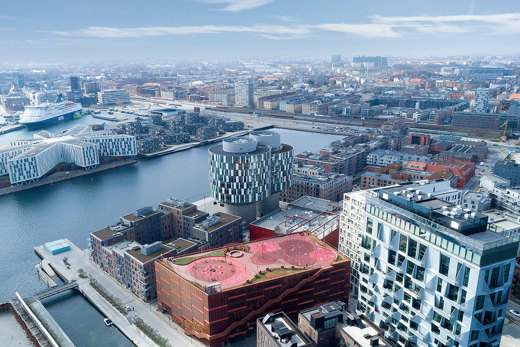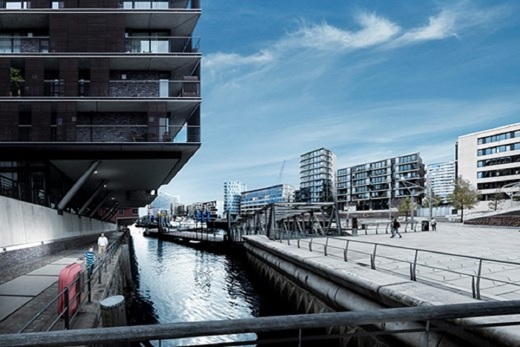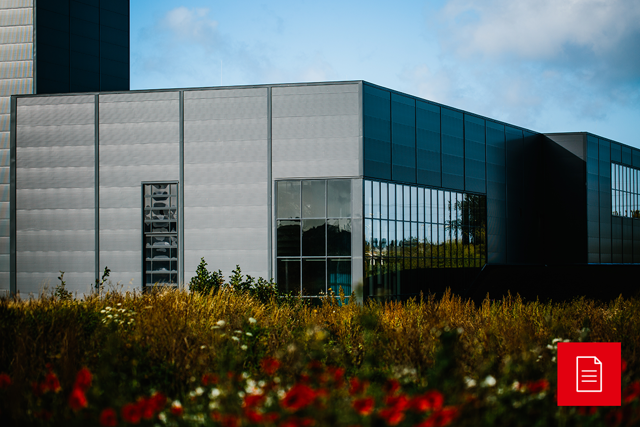
By Lars Tveen the president of Danfoss Heating, originally posted on www.euractiv.com.
We are running out of time to achieve the Paris Agreement goal of limiting global warming to 1.5 degrees Celsius by 2030, and need urgent and ambitious climate leadership. Cities are central to this effort and it is crucial that we continue to enable our cities to address and solve climate challenges.
By 2030, cities will consume 60-80% of energy resources. Looking at Europe alone, heating in buildings accounts for 30% of total energy consumption. In addition, cities are responsible for 70% of global emissions.
At the same time, there are unique opportunities in cities to create efficient energy systems and use synergies between sectors. That is why, to meet their ambitious climate targets, cities need to transform their energy systems. And at the core of this transformation is the integration of different sectors into one smart and efficient energy system.
The coupling of heating, cooling, and electricity, in particular, can speed up decarbonization in a cost-effective way.
The good news is that the technologies to accelerate the decarbonization already exist. And by fast-tracking the adoption of these innovative and proven solutions in cities, we can accelerate the low-carbon development and lead the way to climate neutrality by 2050. Not only in Europe, but globally.
What we need now is a policy framework that facilitates the adoption of the available technology. A policy that connects the dots across the entire heating and cooling value chain. And that takes a systematic approach across sectors, energy carriers, costs and security of supply.

District energy systems can help close the gap toward the 1.5 degrees Celsius pathway
District energy is proven to be economically and environmentally advantageous and to hold significant and untapped potential to fast-tracking decarbonization. District energy networks can distribute heat and cold from sustainable sources within a city or municipality and balance the electricity system.
In fact, today’s modern, fourth generation district energy systems, act as a flexible energy infrastructure where locally available energy sources can be “plugged in” – be they geothermal, solar thermal, waste heat or large-scale heat pumps.
And by integrating buildings into such an infrastructure, they can take a much more active role in the energy system. For example, by using their thermal mass to provide energy storage or feeding energy they do not need back to the grid.
EnergyLab Nordhavn in Copenhagen is a good example of how the sustainable city of the future could look like. The project is developing ways to integrate renewable power, heat, transport and energy-efficient buildings into one intelligent, flexible energy system.
Many other cities in Europe – from Paris over Berlin to Warsaw – are also using district energy for higher energy efficiency, stability in the network, and cutting air pollution.
However, the share of district energy today is far from where it should be if we want to use its full potential to fast-track a cost-effective energy transition. In Europe alone, the share of district energy could increase from today’s 12% average to 50%.
By unleashing this potential, we can improve energy efficiency, reduce emissions and integrate higher shares of volatile renewable energy. And all this at a lower cost compared to scenarios without district energy.

Climate leadership for a fast and cost-effective transition
City networks such as C40, Eurocities, and Celsius, are doing a great job in sharing best practices and taking the lead in ambitious climate action. Their contribution is significant, and we support it. But they cannot go it alone – we need ambitious climate action across all levels of government which should be matched in the EU´s legislative framework.
EU member states must collectively take action and step up in their national energy and climate plans. At the same time, they must commit to reaching climate neutrality by 2050 and implement concrete policy measures that make it happen. With the “Clean Energy for All Europeans” package, we have set the EU on course to increase energy efficiency, make our buildings smart and decarbonize heating and cooling. Now it is time to transpose the various directives into national law, without delay, and with high ambition.
In doing so, we must focus on three points:
Clear plan to decarbonize heating and cooling and ambitious targets to increase the share of renewable and waste heat and cold to accelerate the uptake of sustainable solutions like district energy and heat pumps;
Strengthen a system approach that incentivizes energy efficiency across the entire value chain from sustainable energy carriers, over-efficient grids, to buildings efficient in actual operation, and the use of synergies between thermal and power grids;
Accelerate the implementation of capital-light technologies to make buildings smart and efficient under real-life performance. Besides the envelope and energy supply, the “3rd pillar” of energy efficient buildings – the control of energy flows – must be optimized. With a savings potential of 30% and 1-4 years payback time, this is an opportunity we cannot miss.
A race we can all win
But we must go beyond Europe. On September 23, the UN Secretary General is bringing world leaders to a Climate Summit to increase ambition on climate action. So far, cities have shown they are leading the way towards a more sustainable future by making ambitious commitments in line with Paris Agreement targets. We now count on EU leaders to unite behind an ambitious climate plan to bring to New York that promises to cut emissions even more quickly and deeply.


